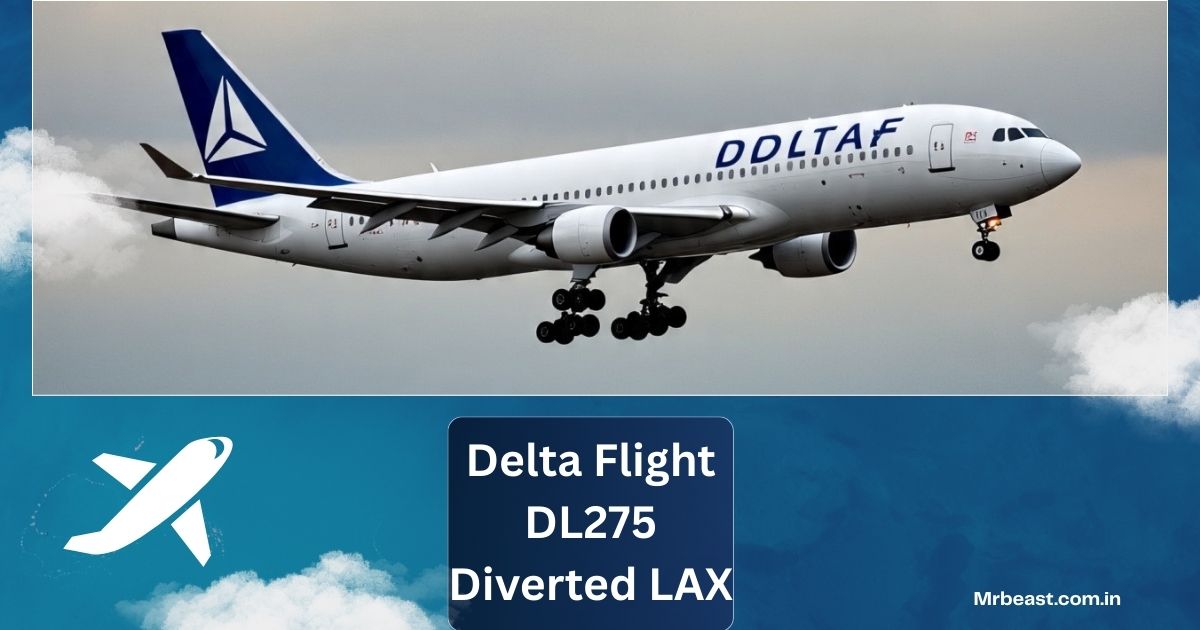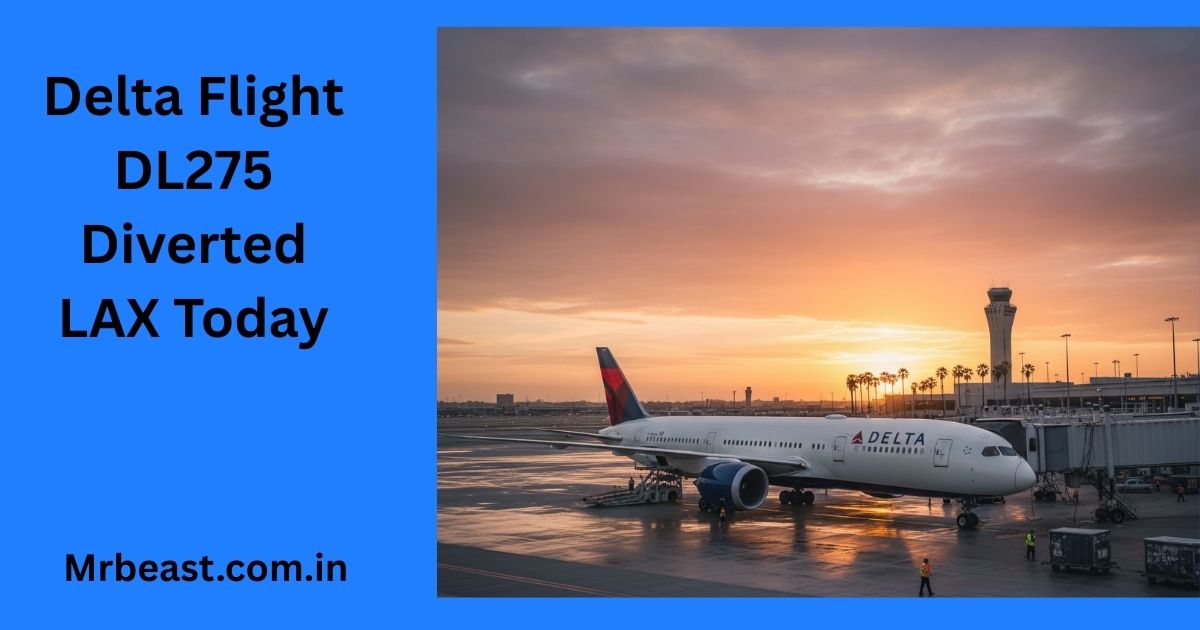Introduction
On May 28, 2025, passengers onboard Delta Flight DL275 experienced an unexpected diversion that brought global attention to aviation safety procedures. The flight, which was scheduled to operate from [[Detroit Metropolitan Wayne County Airport]] to [[Haneda Airport]] in Tokyo, had to be diverted to [[Los Angeles International Airport]] (LAX) due to a technical fault. While diversions in aviation are not unusual, the circumstances of DL275 highlight the complexity of modern airline operations, the role of flight crew decision-making, and the uncompromising priority of safety in commercial aviation.
In this article, we will explore in detail what happened on DL275, why the diversion occurred, the passenger experience, and the broader implications for [[Aviation safety]].
The Original Plan: Detroit to Tokyo
Delta Air Lines, one of the world’s largest carriers, operates several long-haul routes across the Pacific. Flight DL275 is among its flagship services, connecting the American Midwest to Tokyo. Operated on an [[Airbus A350 XWB]], the flight typically covers more than 6,300 miles and takes approximately 13 hours.
On May 27, 2025, DL275 departed from Detroit on time, with passengers expecting a smooth overnight journey across the Arctic route into Japan. Everything proceeded normally for the first part of the journey until a technical fault changed the course of events.
The Technical Issue
The reported cause of the diversion was a problem with the engine anti-ice system. This system prevents the dangerous accumulation of ice on an [[Aircraft engine]], which can impair performance and lead to hazardous conditions at high altitude.
Although the aircraft was never in immediate danger, the system’s failure meant that continuing across the Pacific Ocean was not considered safe. The crew was faced with a decision: turn back, land at a closer northern airport, or head to a major hub with full technical support.
Why Los Angeles International Airport?
The choice to divert to [[Los Angeles International Airport]] was not accidental. LAX is one of Delta’s significant hubs on the West Coast and is equipped with comprehensive maintenance facilities capable of handling widebody aircraft such as the A350.
Key reasons for selecting LAX included:
- Maintenance Capabilities: LAX has the facilities and trained staff to inspect and repair advanced systems like the Rolls-Royce Trent XWB engines used on the A350.
- Passenger Connections: Being a global hub, LAX offered passengers options for rebooking onto alternative flights to Tokyo and other Asian destinations.
- Runway Length & Safety Services: With multiple long runways and emergency readiness, LAX is among the safest diversion airports in North America.
The aircraft landed safely on Runway 06R at about 1:08 AM on May 28, 2025, with no injuries reported.
The Role of the Flight Crew
The flight crew’s swift and professional handling of the situation reflected the depth of training emphasized in [[Airline]] operations. Once the fault was detected, they followed standard operating procedures:
- Diagnosis of the Fault – identifying the anti-ice malfunction.
- Communication – notifying air traffic control and Delta operations.
- Decision – selecting the most appropriate airport for diversion.
- Passenger Assurance – informing travelers with calm, clear communication.
This chain of decisions ensured the flight’s safety while minimizing disruption as much as possible.
Passenger Experience
For the more than 300 passengers onboard, the experience was understandably unsettling. Reports suggest that some passengers were anxious when they learned of the diversion, but most expressed relief at the crew’s transparency and professionalism.
After landing, Delta provided assistance with accommodation and rebooking. Many passengers were rerouted to Tokyo on later flights, while others were accommodated in Los Angeles.
Such responses are standard practice in the airline industry, as companies must manage not only safety but also the customer service implications of diversions.
Economic and Operational Costs
Flight diversions are expensive. For Delta, the DL275 diversion likely cost millions of dollars in extra fuel, maintenance checks, passenger compensation, and scheduling disruptions. Airlines often absorb these costs as part of their commitment to maintaining the highest standards of [[Aviation safety]].
However, the long-term benefits of preserving customer trust and preventing potential accidents far outweigh the financial losses.
Aviation Safety Lessons
This incident highlights several broader lessons in the field of aviation:
- Safety Always Comes First: Regardless of cost or inconvenience, safety protocols take precedence.
- Importance of Maintenance Hubs: Airlines rely on major hubs like [[Los Angeles International Airport]] and [[Hartsfield–Jackson Atlanta International Airport]] for handling technical diversions.
- Predictive Technology: The need for advanced real-time monitoring systems is critical. AI-driven diagnostics could detect such faults even before takeoff, reducing the chances of airborne diversions.
Historical Context of Diversions
Diversions like DL275 are not unique in aviation history. Major airlines, including [[Delta Air Lines]], have occasionally had to divert long-haul flights due to weather, medical emergencies, or technical issues.
For example:
- Medical emergencies often result in unscheduled landings at the nearest suitable airport.
- Severe weather conditions, such as typhoons or blizzards, have forced diversions of trans-Pacific flights in the past.
- Technical issues, while rare, demonstrate the importance of backup systems and precautionary decision-making.
These events reinforce the reliability of aviation systems, where redundancy and precaution are built into every aspect of flight operations.
Broader Impact on the Airline Industry
The DL275 diversion has sparked discussions within the aviation community about the role of technology in preventing such events. Industry experts argue for greater integration of predictive maintenance technologies, which could identify malfunctions before they become operational threats.
Additionally, the incident reinforces public trust in commercial aviation. Even when something goes wrong, passengers can see firsthand how rigorously safety is upheld.
Media and Public Reaction
News of the diversion spread quickly through aviation media and online forums. Passengers praised the crew for their handling of the situation, while industry analysts discussed the costs and logistics involved.
On platforms like aviation forums and social media, frequent flyers and enthusiasts debated whether the aircraft could have diverted to Anchorage or Seattle. Ultimately, Delta’s decision to land at LAX was supported as the most logical choice, given the availability of technical support.
Conclusion
The diversion of Delta Flight DL275 to LAX serves as a reminder of the complexity and resilience of modern aviation. What could have been a serious threat to safety was managed with precision, professionalism, and calm decision-making.
For passengers, it was an inconvenience but also a reassurance that when issues arise, airlines like [[Delta Air Lines]] put safety above all else. For the industry, it was another case study in the importance of predictive maintenance, strong hub infrastructure, and well-trained crews.
Above all, the incident demonstrates that air travel remains one of the safest forms of transportation. Even when challenges occur, the systems in place—from technology to human decision-making—ensure that passengers arrive safely on the ground.










